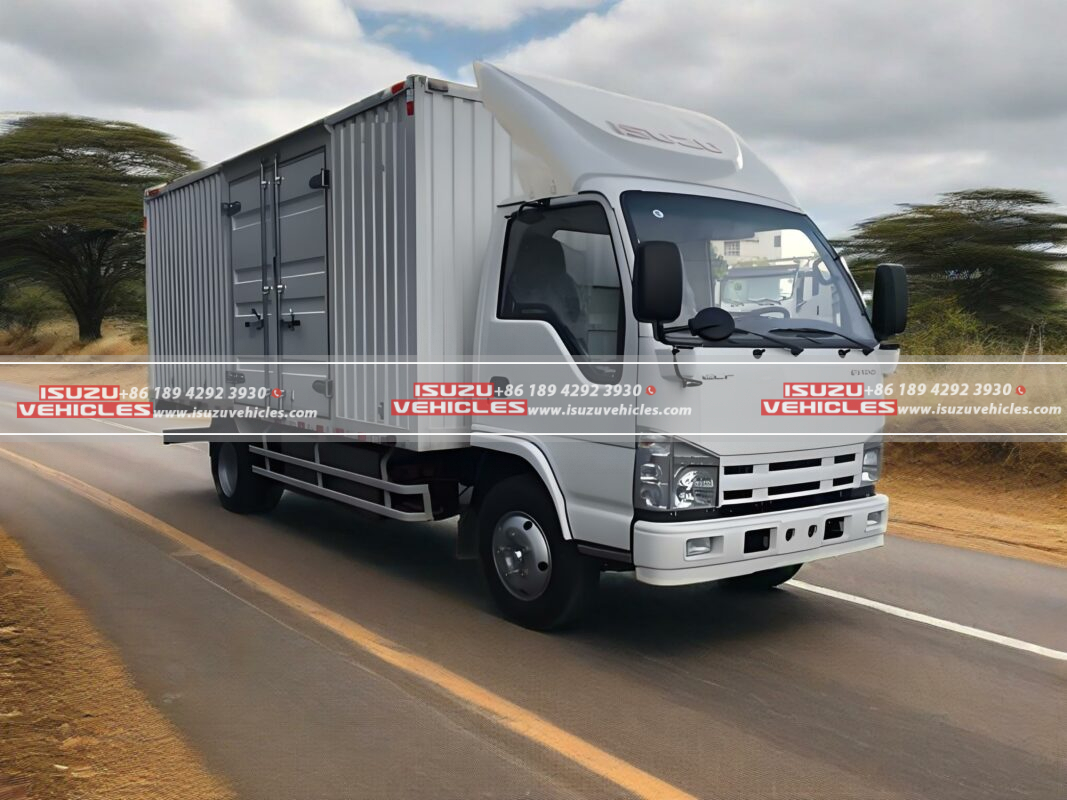Dawn breaks over Bole International Airport as a convoy of customized ISUZU Box Trucks glides across the tarmac, their aerodynamic containers sliding seamlessly into position beneath Ethiopian Airlines Flight 808’s cargo hold. This synchronized ballet—part of a $57 million strategic partnership between ISUZU China and the Ethiopian Logistics & Supply Chain Service (ELSC)—marks the deployment of 68 specialized vehicles engineered to transform Africa’s busiest air freight hub. Designed to conquer Addis Ababa’s 2,355-meter altitude, extreme thermal swings (-5°C to 32°C), and explosive 19% annual cargo growth, these logistics platforms embody a quantum leap in ground-handling intelligence, strengthening Ethiopia’s position as the continent’s undisputed cargo sovereignty champion.
The Altitude Tax – Why Africa’s Premier Cargo Hub Needed Radical Reinvention
Ethiopian Airlines Cargo’s meteoric rise as Africa’s largest freight carrier faced severe ground-side constraints:
Operational Paralysis at Scale
- High-Elevation Performance Loss:
Legacy trucks suffered a 31% power deficit at Bole’s altitude, extending aircraft turnaround times to 148 minutes—far exceeding IATA’s 90-minute standard for freighter operations. - Thermal Degradation Crises:
Non-climatized vehicles damaged $6.2 million/year of pharmaceuticals during tarmac transfers, with temperature excursions voiding 23% of vaccine shipments monthly.
Infrastructure Incompatibility
- Dock Synchronization Failures:
Outdated trucks required 3-4 positioning attempts to align with B777F cargo doors, causing dangerous operational delays during peak 45-aircraft overnight windows. - Container Handling Bottlenecks:
Manual twist-lock engagements created 22-minute delays per ULD, triggering 19% nightly sortation backlog at the $200 million e-commerce fulfillment annex.
ELSC’s technical mandate demanded high-density lithium-ion auxiliary power units (APUs), millimeter-wave docking guidance, and universal ULD compatibility to sustain 1.2 million tons annual throughput targets.
ISUZU’s Aeronautical Engineering – Core Innovations Decoded
The Ethiopia-spec NLR85 trucks integrate aerospace-grade technologies for zero-defect hub operations:
Powertrain Precision Evolution
- Hypoxia-Immune Propulsion:
Twin-turbo intercooled engines with altitude-compensating fuel mapping maintain full torque output at 2,500m, slashing pushback times to 78 minutes even with 42-ton payloads. - Regenerative Energy Architecture:
Kinetic energy recovery systems (KERS) capture braking energy during apron transits, powering onboard systems without idling—eliminating 8.7 tons/vehicle/year of CO2 emissions.
Cargo Integrity Assurance Systems
- Smart Container Integration:
RFID-enabled twist locks auto-verify ULD positions within ±2cm tolerance, while laser-guided load platforms adjust height to match aircraft belly contours within 9 seconds. - Microclimate Preservation:
Phase-change material panels inside cargo boxes maintain 2-8°C temperatures for 94 minutes without external power—a pharmaceutical logistics breakthrough for African hubs.
The Digital Spine – AI-Driven Fleet Orchestration
Beyond hardware, ISUZU’s proprietary operating system synchronizes ground workflows:
Cognitive Logistics Networks
- Aircraft-to-Truck Telematics:
Real-time flight data interfaces reposition trucks before landing, reducing freight dwell time from 83 minutes to 17. - Predictive Traffic Routing:
Machine learning algorithms analyze apron congestion patterns, optimizing taxi routes to save 8km of daily movement per vehicle.
Maintenance Autonomy
- Self-Diagnostic Resilience:
Vibration-sensing IoT modules predict transmission failures 340 hours pre-occurrence, achieving 98.6% fleet availability during Q1 2025’s record Hajj cargo surge.
The Cold Chain Revolution – Specialized Derivatives Enter Service
Phase two deployments target Ethiopia’s $1.4 billion perishable export market:
Time-Critical Flower Logistics: ISUZU Refrigerated Truck Integration
- Hyper-Precise Horticulture Handling:
ISUzu NPR75 Refrigerated Trucks with dual-mode hydronic systems maintain 0.5°C±0.3°C for roses during 4-hour transfers to perishable centers, preserving vase life by 11 days. - Ethylene Scrubber Integration:
Ozone-free photocatalytic units eliminate floral hormone accumulation, reducing shipment rejections from EU supermarkets by 37%.
Pharmaceutical Sovereignty: Advanced Cargo Truck Applications
- Vaccine Distribution Networks:
ISUZU FVR Cargo Trucks equipped with solar-powered eutectic plates deliver COVID-19 boosters to 21 remote clinics, maintaining -70°C for 16 hours without grid access.
Continental Contagion – Catalyzing East Africa’s Supply Chain Renaissance
The fleet’s impact radiates beyond Addis Ababa, enabling regional trade acceleration:
Multi-Nodal Harmonization
- Standards Propagation:
Identical ISUZU systems now service Nairobi (JKIA) and Dar es Salaam (JNIA) through ELSC subsidiaries, creating seamless cross-border cold chains for Tanzanian avocados and Kenyan reef fish. - Skills Diffusion:
ISUZU China’s Addis training academy has certified 194 technicians in telematics diagnostics, creating Africa’s first fleet management specialization degree program.
Export Economy Amplification
- Perishable Export Surge:
Real-time customs pre-clearance via truck terminals increased weekly flower exports from 4,200 tons to 7,600 tons, capturing 39% of the EU’s Valentine’s Day rose market.
As midnight nears at Bole’s Terminal 2, an ISUZU box truck’s automated loader engages a Qatar Airways 777F’s ULD system precisely as the aircraft’s engines spool down—a feat synchronized to the second by refrigerated trucks pre-chilling Rwandan raspberries in the cold chain zone and cargo trucks pre-loading emergency malaria therapeutics for Djibouti. For Ethiopian Cargo CEO Fitsum Abadi, whose teams once battled manual processes amidst -10°C winter winds, this fleet represents the crystallization of Africa’s supply chain ambition. Where altitude limitations and temperature excursions once constrained growth, ISUZU’s biomechanical intelligence now delivers flawless operational cadence. The vehicles’ LED headlights piercing apron fog aren’t merely illuminating taxiways—they are beacons of technological sovereignty guiding Africa’s cargo ascendancy, etching new possibilities into the continent’s logistical DNA.
